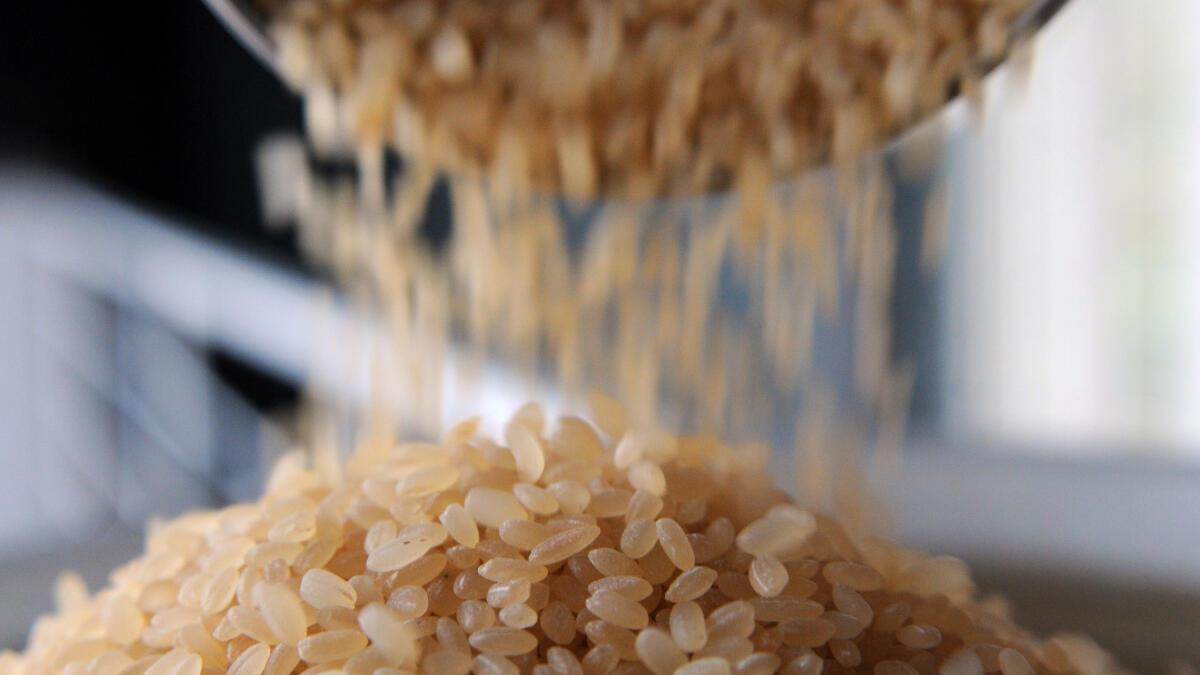Data | Why India’s rice export ban impacts Asian and African nations the most

Rice kept for sale at a retail outlet in Kochi, Kerala.
| Photo Credit: K.K. Mustafah
In the last couple of days, many panic-stricken Non-Resident Indians (NRIs) have thronged grocery stores and supermarkets in the United States to hoard bags of rice. Videos of people jostling to buy sona masuri rice (a lightweight and aromatic medium-grain rice) and photos of long queues outside Indian stores became viral on social media. In order to control the chaos, many stores in the U.S. placed a limit on the sale of rice. Some even restricted sales to ‘one rice bag per family’ to deal with the unprecedented crowds.
This sudden rush followed the Indian government’s decision on July 20 to ban the export of non-basmati white rice to “ensure adequate availability in the Indian market and to allay the rise in prices in the domestic market.” It did not restrict the export of the other types of semi/wholly milled rice — basmati and parboiled rice.
The exported share of non-basmati white rice surpassed the share of basmati rice in the last two fiscal years (Chart 1). In FY23, India exported around 64 lakh tonnes of non-basmati white rice and close to 45 lakh tonnes of basmati rice. The most widely exported type was parboiled rice (78 lakh tonnes). Now, non-basmati white rice, which formed over a quarter of semi/wholly milled rice, has been taken off the market.
Chart appears incomplete? Click to remove AMP mode
Over 140 countries bought non-basmati white rice from India in FY23. The effect of the ban will be most pronounced in the neighbouring countries of Nepal and Bangladesh, the African countries of Madagascar, Benin, Kenya, and Ivory Coast, the Asian countries of Malaysia and Vietnam, and the UAE, which are all the biggest buyers of this type of rice in absolute terms (Chart 2).
Chart 2 shows the average quantity of non-basmati white rice bought by the top 50 importers per year between FY19 and FY23.
Interestingly, the U.S. is ranked 34th on the list, with just over 27,000 tonnes of average imports per year. In contrast, Nepal bought 4.5 lakh tonnes per year in the considered period. Thirty three other countries are more impacted by the ban than the U.S. So, the hullabaloo over rice in the U.S. can be explained as a reporting bias.
Chart 3 shows the average quantity of semi/wholly milled rice (all the three types together) bought per year between FY19 and FY23. The bigger the circle, the higher the dependency of a country on India for rice.
The U.S., which bought over 2 lakh tonnes of such rice from India per year in the period, is ranked 11th.
Here too the U.S.’s dependency on India for semi/wholly milled rice was only 20% compared to Nepal’s 99%. In fact, the dependency was over 50% in 23 countries — eight of them in West Asia and nine in sub-Saharan Africa. The data hints that a part of the rush in the U.S., which sources 80% of its needs from elsewhere (mostly Thailand), could also be due to panic buying or the preference of NRIs for Indian brands.
Back in India, the decision may bring relief to consumers as many of them, especially in the southern States, were paying over ₹50 for a kilo of rice as shown in Table 4. Climate change-related disasters such as extreme flooding in the north and relatively poor rainfall elsewhere have also impacted rice sowing this year.
Table 4 shows the retail price of rice (₹ per kg) for select cities.
Table 5 shows the usual area covered under rice (FY18 to FY23 average) for the week ending July 13 and July 20 compared to the actual area covered this year (FY24). Chhattisgarh and Odisha are running high deficits. Overall sowing has gone down, which is why the government is restricting rice exports.
Source: Commerce Ministry, Agriculture Ministry, COMTRADE, Department of Consumer Affairs
Also read: Rice bags off shelves as Telugus in U.S. storm supermarkets
For all the latest business News Click Here

